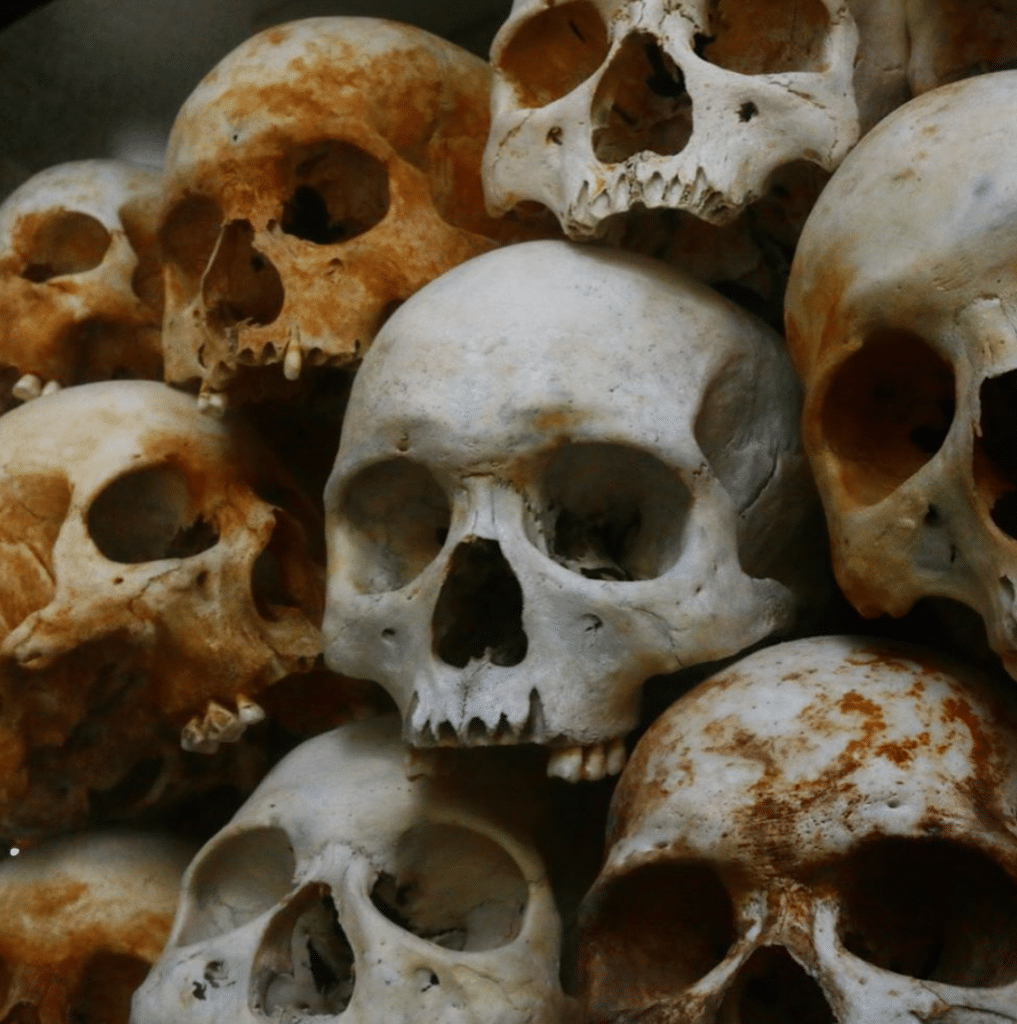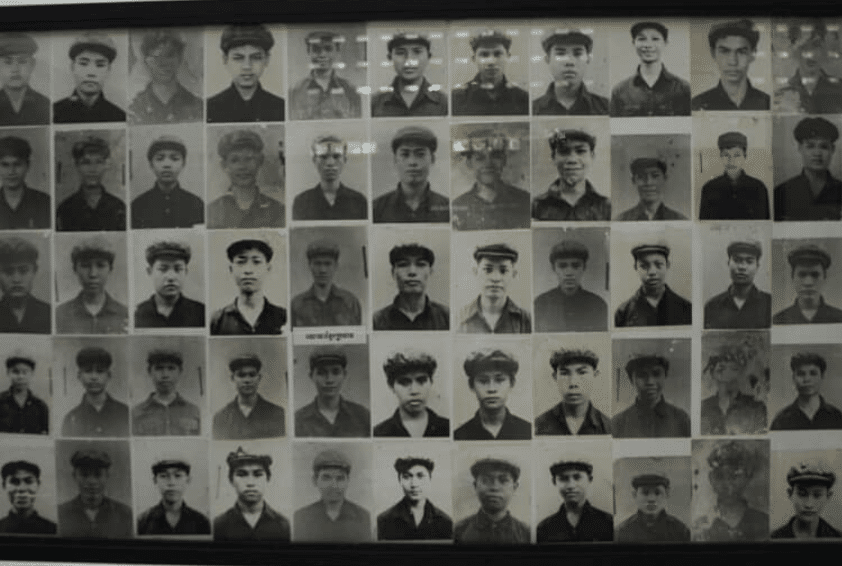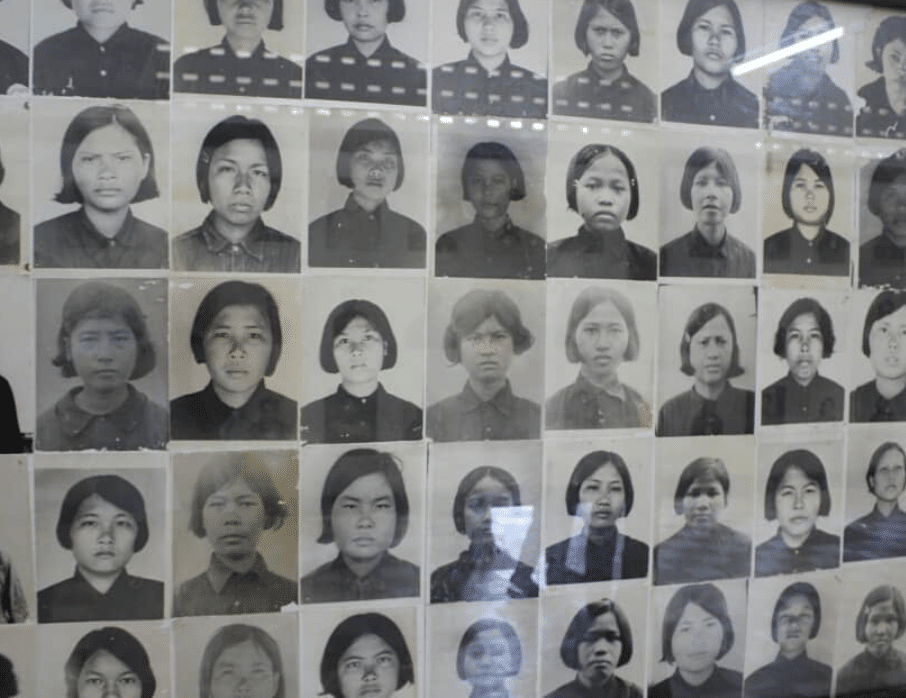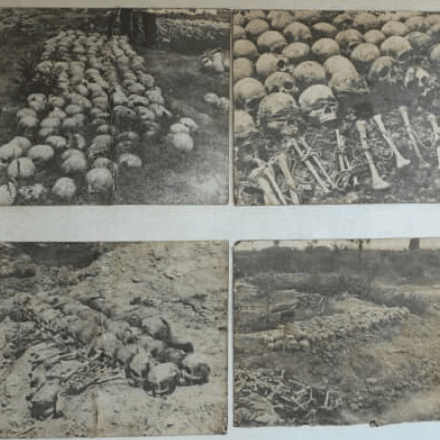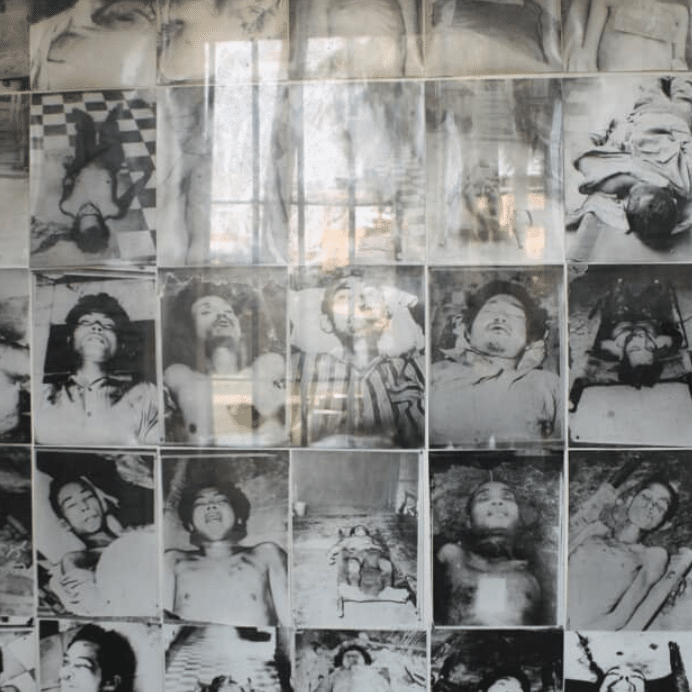S21 Prison & The Killing Fields
The Cambodian capital city of Phnom Penh has so many exciting places to visit. But, the main focus of our trip was to experience the Tuol Sleng Genocide Museum. Also known as the Cambodian Killing fields and the S21 Prison.

Visiting the Tuol Sleng Genocide Museum and Killing Fields was devastating in person. The weight of these horrific sights and real-life stories still carry the same heavy burden of sadness when blogging about them at a much later date.
* This blog comes with a pre-warning; the below content contains photos of dead people, skeletal remains and other disturbing images relating to the Cambodian Genocide of the Khmer Rouge and the Cambodian People.
Despite these upsetting images, I implore you to continue reading to find out about the horrific crimes that occurred only 40 years ago.
I would advise some previous research prior to visiting these two locations. My knowledge of the Khmer Rouge Genocide was extremely limited and maybe I would have found the experience less of a shock had I known more.
A good source of information I used for general contextual understanding was the Angelina Jolie directed film: First they killed my father.
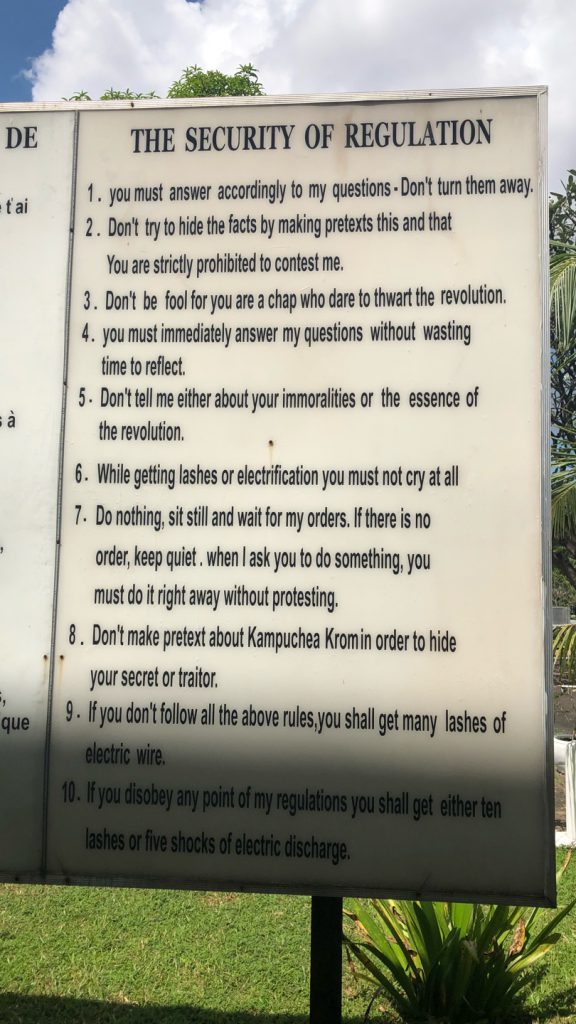
Tour Options and Pricing
We stayed in the Phnom Penh Mad Monkey Hostel and arranged our Tuk Tuk tour through them.
Honestly, it should cost you no more than $20 USD per tuk tuk for a tour that consists of both the below stops, these can fit up to four people and allows you to split the cost cheaply.
The Killing Fields
Around a 30 – 40 minute tuk tuk from the centre of Phnom Penh
Entrance Fee: $3 USD
They provide you with audio headphones in multiple languages with an guided tour.
Tourism Cambodia Website
S21 Tuol Sleng Prison
In the centre of Phnom Penh and usually the second stop after The Killing Fields if you do a tour
Entrance Fee: $5 USD without audio tour or $8 USD With audio tour
They provide you with audio headphones in multiple languages with an guided tour.
Attire
Guests will be admitted only with appropriate clothing. As in many places in the world, Cambodian culture dictates that legs and arms be covered at commemorative and religious sites.
S21 Prison: Tuol Sleng Genocide Museum
Tuol Sleng Genocide Museum is the memorial site of the S-21 interrogation and detention centre of the Khmer Rouge and Pol Pot regime.
With its location being in the heart of Cambodian Capital, Phnom Penh, it preserves evidence of a tragic and shocking period in Cambodian history.
S-21 served as the main central hub of one of many prison systems throughout the country. It was used throughout the period as a secret facility for the detention. Alongside, interrogation, torture and extermination of those deemed “political enemies” of the regime.
One of the worst policies upheld by the regime was a policy of guilt-by-association. As a result, at times whole families were detained at the centre. Very few inmates were released out of the prison during the active years from 1975 and 1979.
Shockingly, only 12 former inmates survived the opening of S-21 when Phnom Penh was liberated by the resistance. Four of them were children.
Cambodia History
Between 1975 and 1979, 15,000 – 20,000 people were imprisoned from all parts of Cambodia. Alongside members of the Khmer Rouge, who were considered as traitors. Approximately 1,720 people were working for the torture centre.
One of the most harrowing sights whilst walking through the prison was the realness. This museum hasn’t been cleaned or modified for those visiting.
Quite clearly on the floor of many torture cells you can see the rust of blood stains that have seeped into the tiles. Photos graphically highlight the state in which liberators found bodies. All in a variety of tortured states tied to metal bed frames in the rooms you stand in.
What was difficult to even get my head around was the lack of knowledge of what was occurring in Cambodia during these three years .
A third of the population was murdered. Whilst Pol Pot the leader of the Khmer Rouge was being invited to world summit meetings. This occurred in the same time period of Margaret Thatcher being elected, the film Monty Python being released and West Ham winning the FA Cup. Just to put it into perspective.
When you learn about the devastation of The Khmer Rouge regime, you then notice that Cambodia doesn’t have many old people.
You notice that every single local Cambodian you meet would have had a relative murdered or suffered at the hands of this genocide.
That this genocide affected every single Cambodian across the country. It has given me a lot to think about and I am in awe of the Cambodian people and their resilience.
Khmer Rouge Killing Fields
Within the prison, if you look around, everybody has the same kind of expression and posture. Everyone wanders individually around the Tuol Sleng Genocide Museum with a closed protective positioning. Pensively walking from room to room.
Usually with a hand close to their mouth looking in horror at the capacity of human beings. Ultimately, the Prison leaves you with no words and once I regrouped with Adam, we both were in need of a big hug.
The Killing fields were worse.
I was openly walking around, like everyone else, witnessing the horrors of only one Killing Field location (there were around 300 killing fields and pits throughout Cambodia) with tears streaming down my face.
The Killing Tree
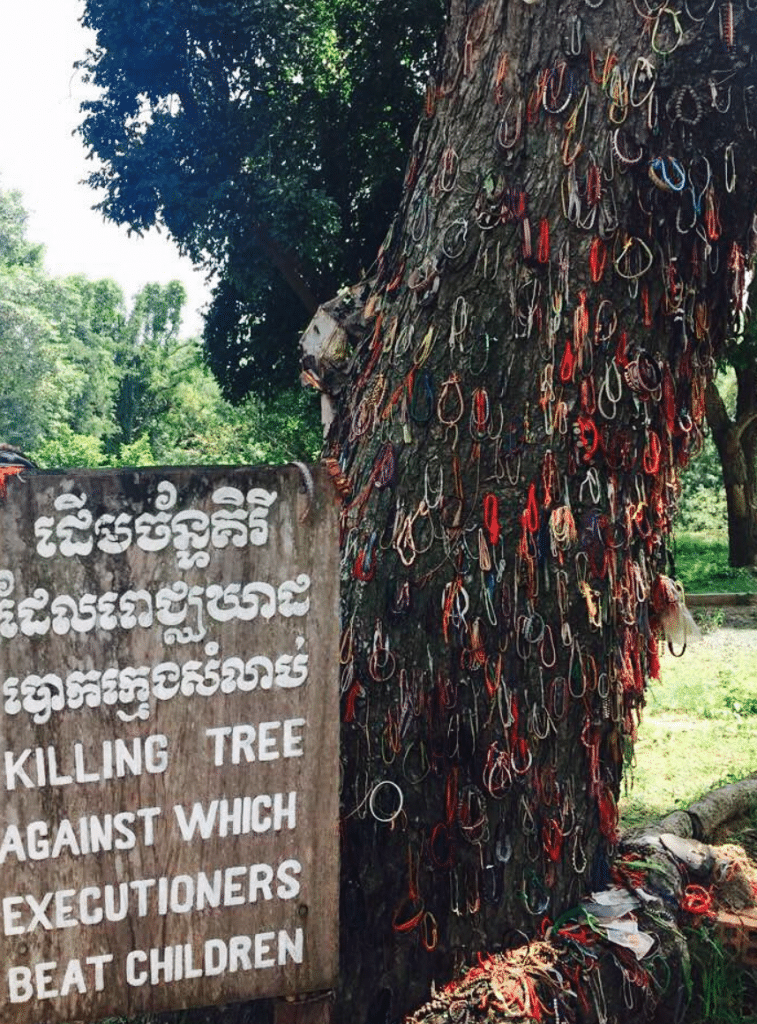
Probably one of the worst areas on the tour. This tree although covered and adorned with many bracelets from well wishes of peace from visitors. Still holds a horrific sight.
You can clearly see strands of hair and discoloured sections of bark from victims which met their end at this tree.
They would hold children and babies by their ankles and use the tree as a solid force to brutally end their lives. Close by, there is a now grass-covered pit in which the sign says remains of three hundred children bodies were found.
Excavated Killing Field Mass Graves
Around 3/4 of the shallow grave pits have been excavated. However, there is still water bogged rice paddies and graves unearthed.
The decision to leave the pits alone and let the dead rest in peace has been decided by the museum. When it rains, the water still brings up unearthed skeletal remains to the surface.
As you walk along the raised wooden floorboards that map around the site, you will without a doubt come across freshly risen bones and teeth.
Disturbingly, you will also find many scraps of cloth from blindfolds, shirt buttons and other clothing items in the earth.

Tuol Sleng Commemorative Stupa
Ultimately, the first and last sight within the museum is a commemorative Stupa. It is filled with the skulls of the victims at the Killing Field of Choeung Ek.
You can leave an offering and say a prayer to commemorate the 3 million Cambodian people who lost their lives to Pol Pots Khmer Rouge Genocide at the Tuol Sleng Genocide Museum.
The Tuol Sleng Genocide Museum remains as a reminder of the atrocities the Cambodian people faced and survived.
It is a heavy afternoon, where tears are likely to be shed. However, it is an important history to learn and should be on your list of places to visit when you visit Cambodia.



